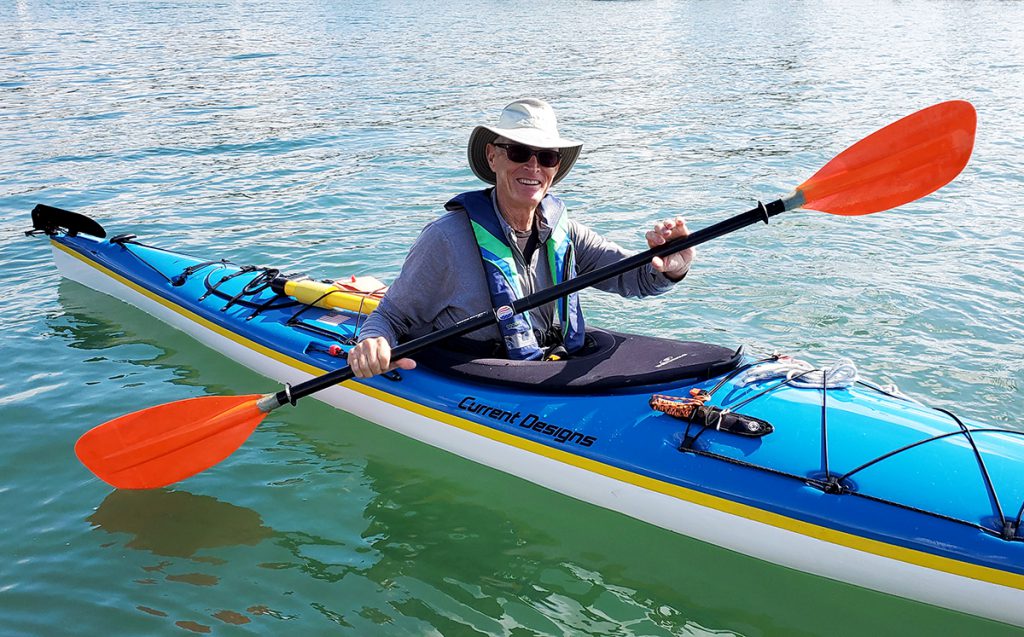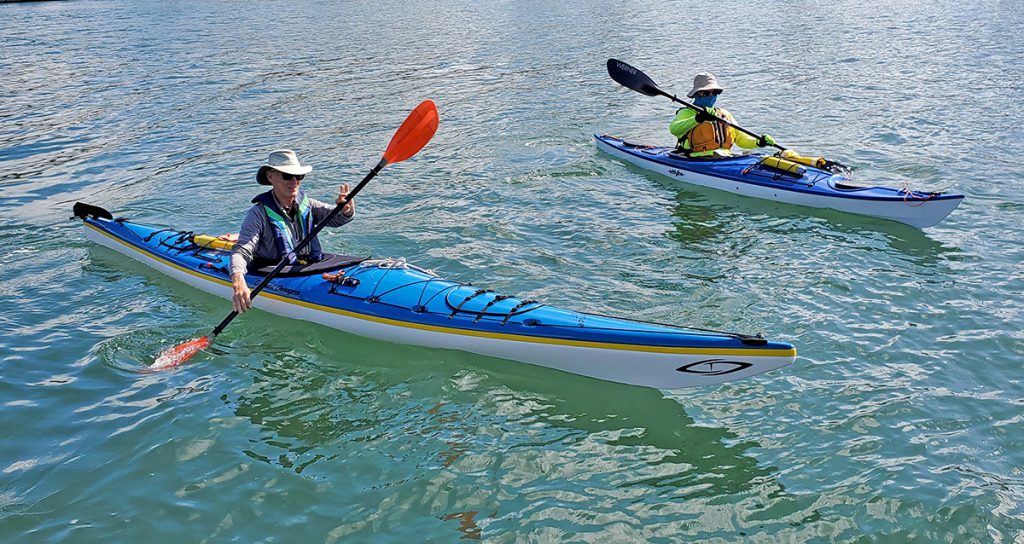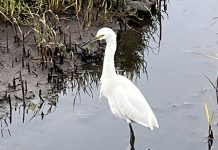
Of the 9,000 boats that call Newport Harbor home, kayaks in their distinct shapes are perhaps the most active watercraft year around.
Even when I regularly sailed my Bluewater cutter sailboat to local islands, to Mexico, and then down to French Polynesia, a kayak was lashed to the deck.
I’ve been a serious ocean kayaker for 45-years—and counting.
Why kayaks? They are affordable, portable, handleable by one person, seaworthy, and reasonably repairable. And generally, it can go virtually anywhere.
Depending on a kayak’s design and the paddler’s skill (and sometimes luck) with the two-bladed paddle, kayaks can conquer most waters. It can be unfathomable rapids, vast oceans, seemingly endless lakes, and calm inlets.
Kayaks can penetrate wildernesses seldom visited, from challenging ice floes to towering waves.
Kayakers sometimes meet their fates, but their kayaks most often survive, to be found downwind, downstream or down current.
Thought to have been designed and created by the Inuit peoples of the Arctic regions between 2,000 and 4,000 years ago, original kayaks were made using sinew-tied whale bone and or driftwood for the frames, which were then tightly wrapped and sewn in tailored animal skins for the waterproof layer.
Kayaks were used for both fishing and sneaking up close to animals on the shoreline – the original stealth watercraft.

Dotting Newport Harbor and beyond the breakwater, sit-on-top kayaks are often used for fishing, many being equipped with electric motors, depth finders, several rods, bait boxes and little refrigerators. There’s also an emergency paddle, which one kayak fisherman recently told me he needed when his battery died off of Big Corona. That was a long paddle back.
The sit-on-tops make for safe, family fun, and are available for rent at various outlets around the harbor.
The kayaks that I took to the Alaskan wilds, to North Baffin Island in the Eastern Yukon, and to Lake Baikal, Siberia, were modern versions of the original kayaks: wooden or aluminum frames lashed or snapped together, then strengthened by a tight skin of Hypalon and woven Dacron cloth.
The locals were intrigued by these modern iterations of their still-traditional craft. In the Marquesas, on the Island of Hiva Oa, north of Tahiti, the villagers offered to let me paddle a solo outrigger if I let them in my kayak.
These large natives squeezed none-too-easily into my kayak, then tipped over into the warm waters more than once. Although they smiled widely, each looked relieved to squeeze back out. Frankly, I wanted my kayak back.
The ocean off Newport is an ideal paddling environment. Look north, you have civilization; look south (yes, Catalina is south-southwest) and you’ve got a virtual, always-in-flux wilderness: whales, sharks, dolphin, seals and sealions, fish of many varieties, and sea birds. It doesn’t take long to interact with many of these wild creatures, if they choose to let you.
Seals pop up next to your kayak, and gaze curiously at you. Fish break the water around you while pelicans dive after them. It’s not uncommon to be visited by dolphins; and on several occasions over the years, I’ve been surrounded by hundreds of leaping dolphin frothing the water as they answer some dinner bell up the coast.
Migrating whales often sound, seemingly within touching distance. The chance of collision seems inevitable; never happened.
Even scarier: my buddies and I have been nearly rundown by speedboats whose skippers were paying more attention to their cell phones or friends than their nautical responsibilities.
Not long ago, on a calm but inky sea about three-quarters of a mile off the end of Balboa Pier, while waiting for a friend to catch up, I was rocked and shocked by a heavy, sharp strike at the bottom of my kayak. It sounded like a billiard ball hitting the deck. Nothing surfaced except my anxiety. I’m told that there is a white shark nursery in the trenches below, and that sometimes sharks will run into an item to evaluate its taste potential. While paddling home, all I could do was hum the music to “Jaws.”
Another common yak species plying and slicing the bay is the racing kayak, a long, narrow, sleek machine – fiberglass or carbon fiber — that moves across the flats with arrow-like grace. They range up to 21 feet in length and measure between 19” and 20” inches in beam. Both the traditional and modern-styled kayaks require stamina, muscular conditioning, varying paddling skill levels depending on style of kayaking and conditions of the waters and winds.
For those wishing to learn about the sport and all its iterations, a voyage on “You Tube” is the quickest way to familiarize oneself. Check out Touring, Ocean Kayaking, White Water Kayaking, and Surf Kayaking. Like the denizens of the deep, there are many species to choose from.
For local kayak rental, an internet search of “Kayak Rental Newport Beach” reveals several kayak rental places from which to choose.
Local Focus writer Richard Simon lives in Newport Beach, but would rather live in his kayak.




